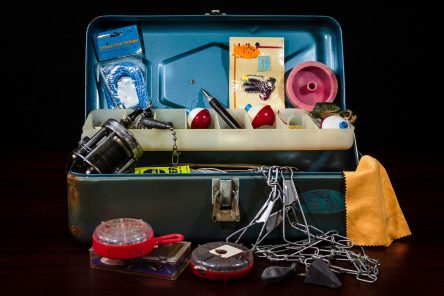
Pack heavier items at the bottom of the tackle box to prevent it from toppling over. Proper weight distribution is crucial to maintaining balance and stability. Safety should always be a priority when handling tackle boxes. Maintaining an inventory checklist can help you keep track of your gear and make restocking more efficient.
#Best tackle box fishing update
Regularly update and restock your tackle box, discarding any damaged or rusty items. Consider using waterproof bags or containers within your tackle box for added protection against water damage. Categorize and label compartments to separate different types of lures, hooks, and accessories.

Best Practices for Tackle Box OrganizationĪn efficient organization is key to maximizing the functionality of your tackle box. If you notice any issues, consider replacing these components to ensure the longevity of your tackle box. Periodically inspect hinges, latches, and zippers for any signs of wear or damage. Use mild soap and water to clean the interior and exterior surfaces, and make sure to dry it thoroughly before storing your gear. Cleaning the tackle box after each fishing trip is essential to remove dirt, debris, and any unpleasant odors. To keep your tackle box in excellent condition, regular maintenance is crucial. Maintenance and Care (Best Fishing Tackle Boxes) Additionally, some tackle boxes come with built-in LED lights, rod holders, or tool storage compartments, adding extra convenience to your fishing outings. Integrated or removable trays provide efficient organization, ensuring your lures, hooks, and baits are readily accessible. Look for tackle boxes made of water-resistant and durable materials to protect your gear from moisture and wear. Sturdy handles and straps are essential for easy transportation to your favorite fishing spots. Features and AccessoriesĪ well-designed tackle box should offer a range of features and accessories to enhance your fishing experience. Some fish demand specific lures, hooks, or baits, which may influence the type and size of the tackle box you choose. It’s also important to consider the specific requirements of the fish species you pursue. For saltwater fishing, you might require additional storage space for larger lures and accessories. If you mainly engage in freshwater fishing, a tackle box tailored to freshwater tackle needs will be suitable. Selecting the right tackle box depends on your fishing style, preferences, and the type of fish you target. Considerations When Choosing a Tackle Box They are constructed with durable fabrics and feature multiple pockets and compartments to accommodate your fishing essentials. On the other hand, soft-sided tackle bags offer flexibility and portability.

They come in various sizes, from compact boxes for short fishing trips to larger cases for extensive tackle collections. Hard-shell tackle boxes are often made of durable plastic or metal, providing sturdy protection for your fishing gear. When it comes to tackle boxes, there are two primary types: hard-shell tackle boxes and soft-sided tackle bags. So, let’s dive in and discover the world of fishing tackle boxes! Types of Fishing Tackle Boxes (Best Fishing Tackle Boxes)

In this article, we will explore the different types of tackle boxes, considerations for choosing the right one, features and accessories to look for, maintenance tips, organization techniques, safety guidelines, and ways to personalize your tackle box.
#Best tackle box fishing portable
Flambeau Outdoors 2059 Hip Roof 7-Tray, Portable All-Weather Tackle Storage, terracotta/brown (Best Fishing Tackle Boxes).Personalizing Your Tackle Box (Best Fishing Tackle Boxes).Best Practices for Tackle Box Organization.Maintenance and Care (Best Fishing Tackle Boxes).Considerations When Choosing a Tackle Box.Types of Fishing Tackle Boxes (Best Fishing Tackle Boxes).Fishing Tackle Boxes: Your Ultimate Fishing Companion.


 0 kommentar(er)
0 kommentar(er)
